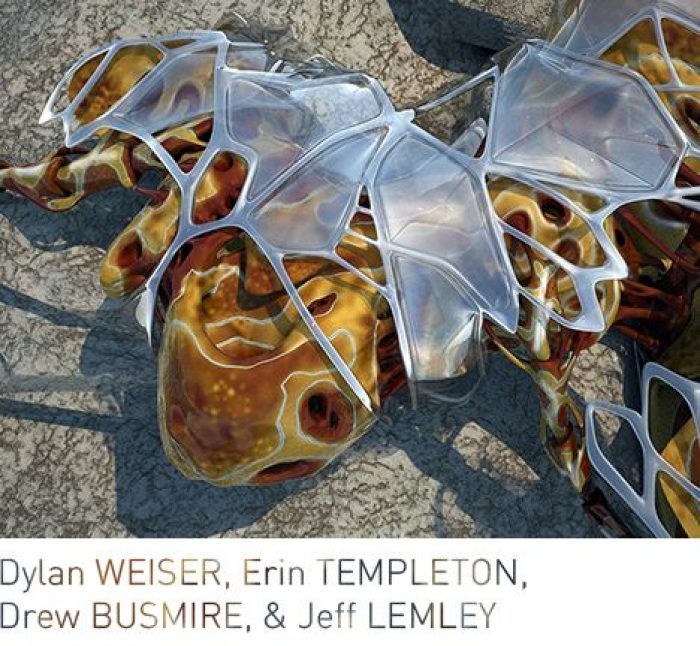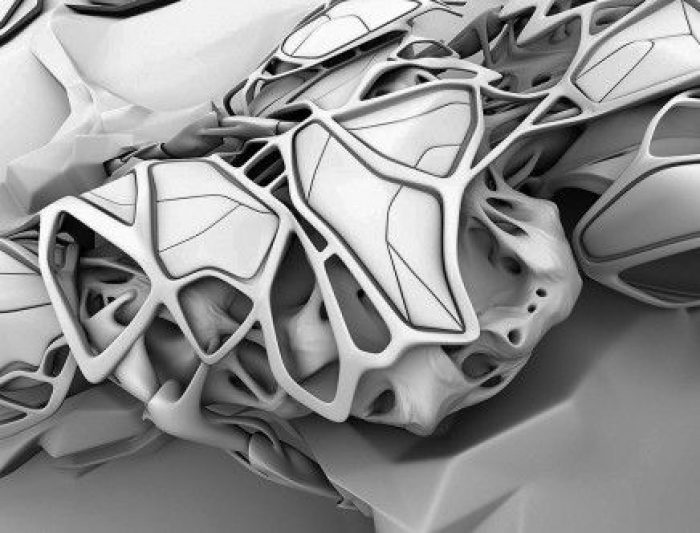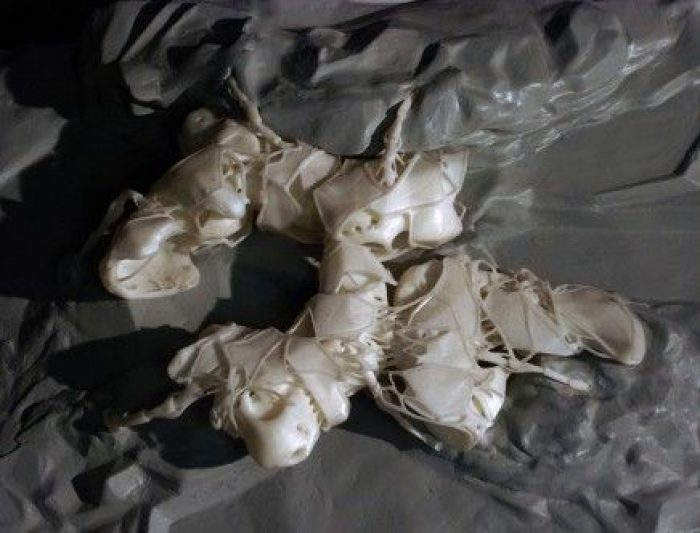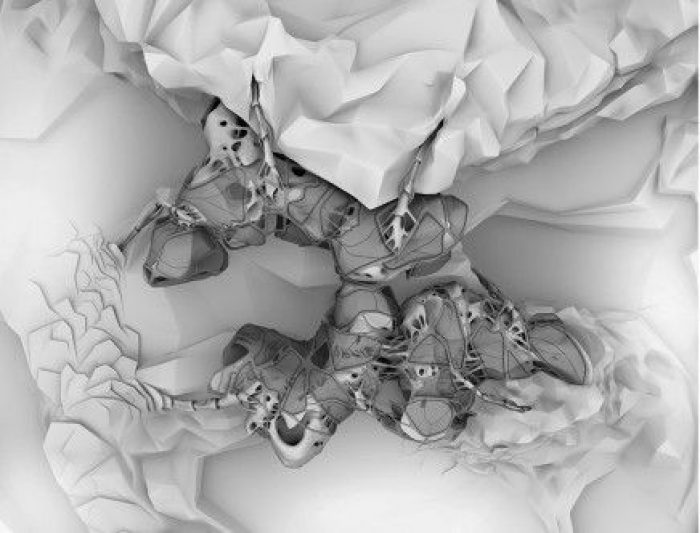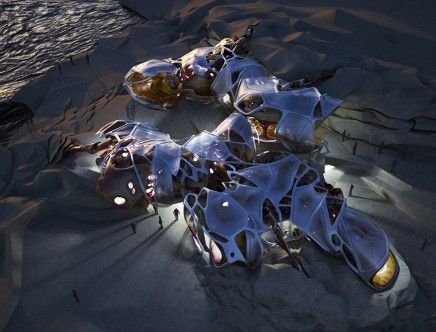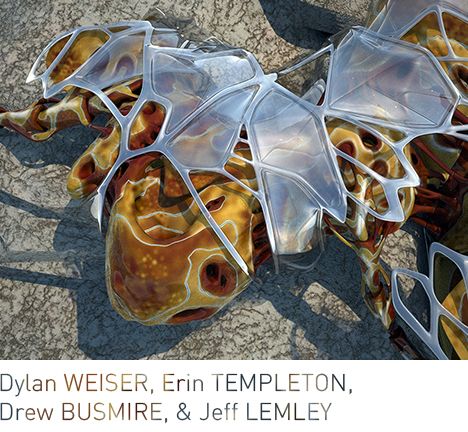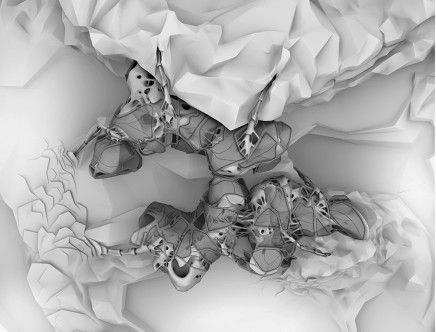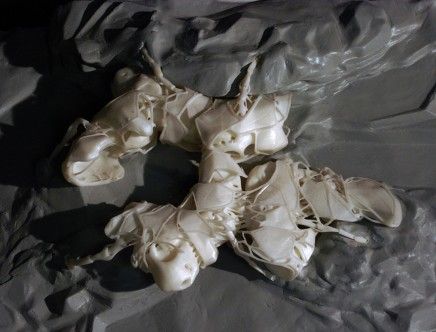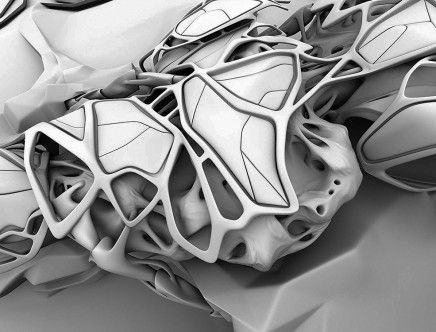Molt, designed by Erin Templeton, Drew Busmire, and Jeff Lemley, researches Pulsation. It treats a building almost as a biological and social organism, which is manifested in the shape and materiality of the building.
Molt considers the natural and cyclical, rethinks it, and implements it in the building. The design process is based on the death of an organism that doesn’t end the organism but rather redefines it. Each time it subsides or dies, it creates a new whole. It uses this rhythmic subsidence-then-redefinition as a design tool to generate space. They define this process as Pulsation.
Molt is not a mere study of organism, but rather it is also an informative statement about usage. Taking this idea of pulsation, it translates it to the scale of urban aggregations. Just as death and rebirth happen cyclically, space behaves similarly, creating a pulsating rhythm. This rebirth or redefinition of space acts as supplement to what is already there. The process is digitally prosthetic: the body is constantly reshaped to fit the needs as time goes by. This is done by analysis of a massive amount of data to create a space that best fits the current condition, keeping in mind that conditions will constantly change.
What interests me in this building is the scale of the research. It is a study of decadence as senescence. As the whole breaks down, there is a focus on the individual pieces post-senescence. It is arguably a study of social aggregation that stems from the fundamental and universal theme of death and rebirth (redefinition). It is a concept found at the scale of a cell but can be translated into the urban scale, tapping into a rhythm that is inherently found in all of us and in all nature.
Courtesy of © Weiser, Templeton, Busmire, & Lemley
Courtesy of © Weiser, Templeton, Busmire, & Lemley
Courtesy of © Weiser, Templeton, Busmire, & Lemley
Courtesy of © Weiser, Templeton, Busmire, & Lemley
Courtesy of © Weiser, Templeton, Busmire, & Lemley


